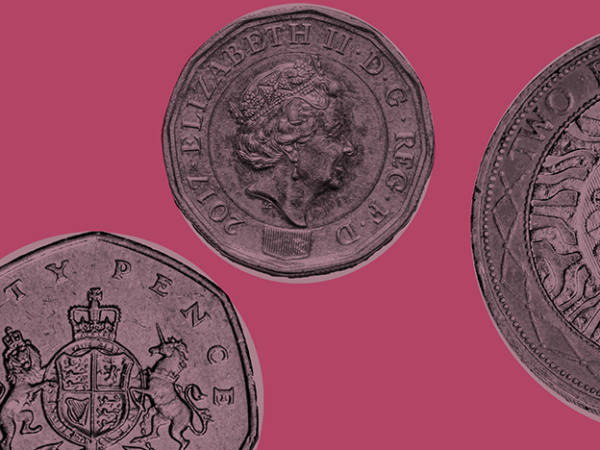Every week, Captain James T Kirk used to tell us that space was the final frontier (you remember, the most famous split infinitive in the English language, “to boldly go etc”). On a more mundane level, investors have been told for almost as long as the SS Enterprise has cruised the galaxy that their final frontier was Africa. Strange, we don’t hear that notion much now. Perhaps it is time to brush it down.
That fund managers are quiet about the prospects for Africa has everything to do with the returns they have generated there. The MSCI FM Africa index – as good a proxy for share returns from Africa as is available – stands 36 per cent below the level at which it exited 2008’s global financial crisis. Sure, that was the period of peak popularity, when the potential of frontier markets – and especially Africa’s – seemed to compensate for the failings of the old world.
As Table 1 shows, the frontier markets have not exactly maintained the running. On the contrary, they have slipped further and further behind the developed world’s markets. Using indices from data provider MSCI, African equities, as measured by its FM Africa index, are the worst performers over one year, five and 10 years of the six major categories in the table.
| Table 1: Share price indexes – how Africa compares | ||||||
| % change on | North America | World | Africa | Europe | Frontier Mkts | Frontier Mkts Asia |
| 1 year | 15 | 11 | -6 | 0 | -5 | 9 |
| 5 years | 100 | 74 | -1 | 30 | 22 | 68 |
| 10 years | 224 | 141 | 3 | 45 | 9 | 32 |
| Base date* | 411 | 300 | 189 | 150 | 132 | 94 |
| *Base date - 31 Dec 2002, except Asia - 29 May 2009. Source: MSCI. Base currency: sterling | ||||||
Yet where there is Africa there is hope; in particular, hope that the continent can eventually live up to its billing as the final frontier of affluence’s inexorable spread and, in the process, that its equity markets can replicate the outsize returns that adventurous investors have captured from developing economies ever since they lighted upon Japan in the 1960s.
It is not as if Africa is short of cheerleaders, especially those positioned within extra-governmental agencies such as various branches of the United Nations or the World Bank. Yet such folk are hardly neutral; they often have a vested interest in talking up the continent’s prospects. Something similar applies to the think tanks and management consultancies that devote a lot of resources to Africa and consequently influence opinion.
For example, the catalyst to this week’s discussion owes much to the publication of this year’s Foresight Africa, from the Brookings Institution, a US think tank that ranks among the world’s most prestigious. This publication – free for download from the Brookings website – is the annual report of the Brookings Africa Growth Initiative, a long-running project. As such, it may be acceptable that Foresight Africa reads partly like a fluffy PR document. After all, its purpose is to talk up the possibilities rather than to squash them. The problem is that, when much the same tone pervades much of the ostensibly-objective assessments of Africa’s prospects, it becomes difficult to know where hyperbole ends and objectivity begins.
Hyperbole may not even be necessary. There is at least a half-decent case for investing in the continent’s future anyway. For starters, take the data shown in Table 2, where a fairly random selection of African countries are ranked by their average annual growth in real GDP over the past five years (the bottom row, showing equivalent data for the UK, provides some context).
| Table 2: Key economic indicators | |||||
| GDP ($ bn) | Per capita GDP ($) | GDP growth (% pa) | Inflation (%) | Current acc balance (% GDP) | |
| Côte d'Ivoire | 140 | 5,443 | 7.3 | -1.1 | -3.6 |
| Tanzania | 156 | 2,771 | 6.2 | 3.5 | -3.3 |
| Kenya | 238 | 4,521 | 5.6 | 4.7 | -5.8 |
| Ghana | 172 | 5,652 | 5.3 | 7.2 | -3.1 |
| Egypt | 1,233 | 12,284 | 4.8 | 14.4 | -3.4 |
| Zambia | 65 | 3,624 | 3.1 | see text | 0.6 |
| Morocco | 292 | 7,826 | 3.1 | 0.2 | -4.1 |
| Nigeria | 1,078 | 5,363 | 1.2 | 11.4 | -3.8 |
| South Africa | 763 | 13,034 | 0.8 | 4.1 | -3.0 |
| United Kingdom | 3,255 | 48,698 | 1.8 | 1.7 | -4.0 |
| Notes: GDP and Per capita GDP both at purchasing-power parity; GDP growth - average of 5 years to 2019; Inflation and Current Account Balance - latest full-year data. Source: World Bank Development Indicators | |||||
The chief point is that, with the exception of Nigeria and South Africa, all the countries have grown faster than the UK, some by a fair lick. Sure, it is a problem that sub-Saharan Africa’s two biggest economies are laggards. Nigeria can at least point to its dependence on oil and the oil price as a partial explanation. South Africa has no such excuses. Nor should the significance of Côte d’Ivoire’s growth be overstated. After all, the country is still in the process of recovering from the so-called Second Ivorian Civil War of 2010-11.
Yet these few columns of data also illustrate some conventional characteristics of economies capable of staying in growth mode – low or lowish per capita value added, implying scope to rise; lively inflation, implying, among other factors, an excess of domestic demand over supply; a deficit on current account, indicating both excess domestic demand and the importation of capital goods to help improve domestic supply. Put simply, a lot of vigour seems to be there.
Besides, one might ask, if Africa really is a basket case, why is China – both its state arm and its private companies – so intent on pouring capital into the continent? China is by far the biggest outside investor in Africa, accounting for perhaps 16 per cent of foreign direct investment, twice as much as the USA, the second biggest investor, according to Unctad, the trade and development arm of the UN. With inflows into the continent in the process of dropping dramatically as an effect of Covid-19’s spread, China’s proportion is set to rise substantially.
When management consultant McKinsey & Company investigated in 2017, it found that more of the China’s inward investment than expected came from private companies. McKinsey reckoned that perhaps 10,000 Chinese firms were operating in Africa, of which about 90 per cent were privately owned. Both to the extent that such investments were motivated solely by profit making (rather than the Chinese state’s strategic aims) and that they focused on meeting the needs of Africa’s internal markets, this augured well for Africa’s future.
These investments also brought three longer term benefits for Africa – employment and the accompanying development of skills, the transfer of technology into Africa, and the development of infrastructure. McKinsey estimated that almost 90 per cent of employees in Chinese-owned firms were African; that two thirds of employers provided skills training; and that half of the companies introduced new products into the markets they served. Granted, such benefits came with costs. McKinsey also estimated that Chinese-owned firms bought just less than half of their inputs from Africa and that only 44 per cent of their managers were locals. Chinese owners also brought their share of violations, from lousy working conditions to illegal extraction of natural resources.
China’s multi-billion dollar vote of confidence in Africa also highlights the continent’s generic merits, which should appeal to any company. These can be summed up in the phrase that Africa is now the best region for low-cost sourcing of goods and labour that the planet offers.
Granted, that statement is as much contention as fact. Even so, it stands up to some examination. As east Asia’s work force ages and becomes more expensive, Africa offers a young, low-cost alternative accompanied by the fastest rate of urbanisation on the planet. Linked to that – and to the manufacturing process – Africa also offers low-cost natural resources in both hard and soft commodities on a scale that probably no other continent can match. Moving around such raw materials, part-finished and finished goods should be made easier by a lattice of free-trade agreements, to which was added in January the most ambitious yet, the African Continental Free Trade Area.
Against these pluses should be placed the minuses; such as the low skills and education levels of Africa’s workforce, the poor quality of the continent’s infrastructure and its endemic – though perhaps receding – levels of corruption.
However, if the logic of having some capital invested in Africa hangs together, then there remains the question of how UK retail investors should go about it. That, arguably, is the rub. It is more than seven years since Bearbull previously discussed ways into Africa and, in that period, the choices have become fewer.
Basically, there are four ways into Africa. The easiest, safest but probably least effective way is what might be labelled the ‘indirect equity’ route. This is to hold shares in global companies that do material amounts of business in Africa. Good examples would be Unilever (ULVR) and Diageo (DGE). That way, some investment returns would emanate from Africa’s growth even if it were unclear how much. Meanwhile, the diversification offered by the multi-national’s global reach would reduce risk though also dilute outsize returns Africa might produce.
The second route is the ‘direct equity’ method, holding shares in companies that do all – or almost all – their business in Africa. Excluding mining stocks, the choice is much diminished. Seven years ago, I suggested a mini-portfolio of four young companies that might have been a geared play on Africa’s growth – Afren, a Nigerian oil producer; Equatorial Palm Oil, a Liberian palm-oil grower, Fastjet, an easyJet clone operating out of Zambia and Zambeef (ZAM), a vertically-integrated food producer also exposed to Zambia's inflation-riddled economy. That three of the four have all but disappeared says much about the way Africa has disappointed. Worst, Afren disappeared in a haze of criminality that saw its chief executive and chief operating officer jailed. Only Zambeef remains on the quoted equity markets, though its share price, which peaked at 57p in 2013, now labours at 6p.
Something similar has happened to investing in Africa via specialist funds, the third route. Closed-end funds Masawara and Blackstar both cancelled their Aim listings 2018. Meanwhile, more interesting is the Africa Opportunities Fund (AOF), decently diversified by activity and region. At the end of December the shares traded at 28 per cent below net asset value after the fund put in its best monthly performance for 13 years. Perhaps it’s a pity therefore that its managers are liquidating the vehicle, which leaves the shares as a short-term punt.
That leaves exchange-traded funds as the remaining route. Here, too, London offers a miserably small selection. The choice is either to track the MSCI South Africa index, which by definition focuses on just one country or to opt for Xtrackers MSCI Africa Top 50 (XMAF). This dollar-denominated fund also has a bias towards South Africa (55 per cent of its assets) but is exposed to Egypt, Kenya and Morocco too. Putting this into a portfolio hardly qualifies as a way to “boldly go” into Africa but, for the time being, it is probably the best on offer.










